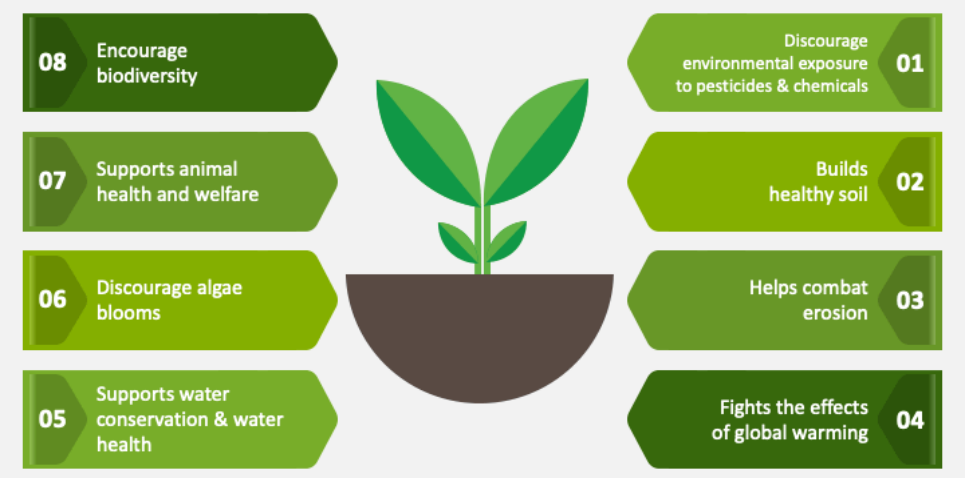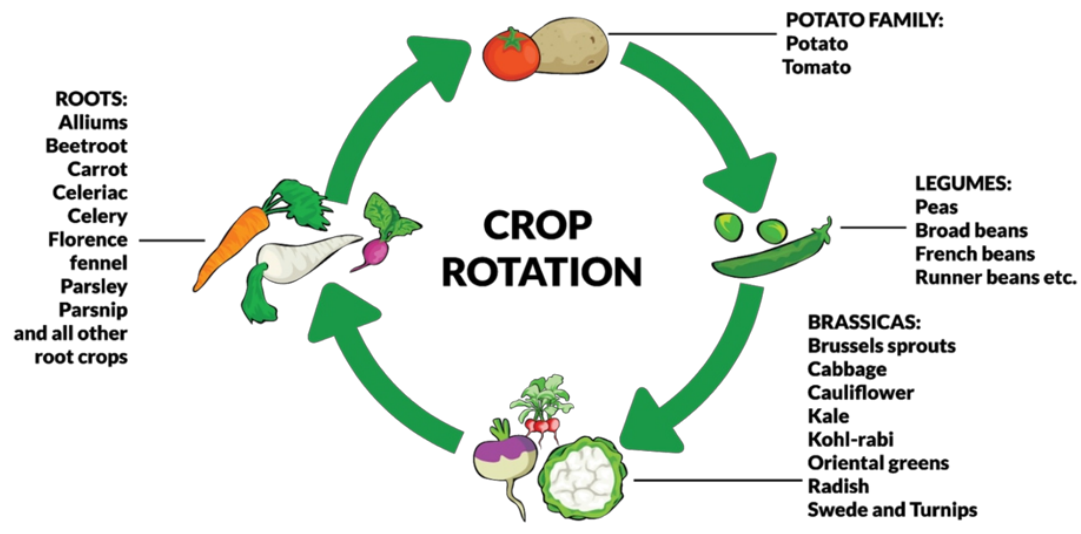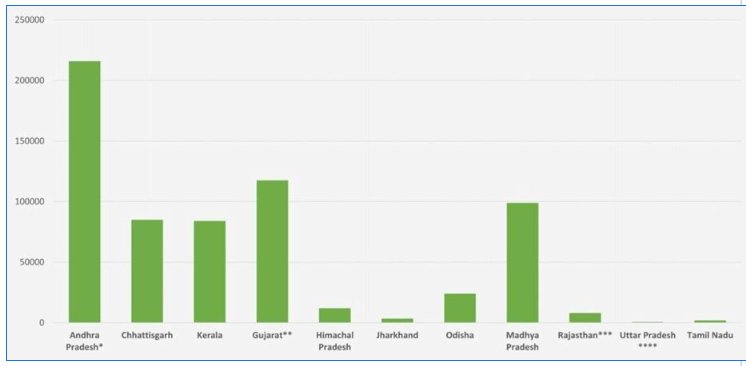Natural Farming is a chemical-free farming system rooted in Indian tradition enriched with modern understanding of ecology, resource recycling and on-farm resource optimization. It is considered as agroecology based diversified farming system which integrates crops, trees and livestock with functional biodiversity. It is largely based on on-farm biomass recycling with major stress on biomassmulching, use of on-farm cow dung-urine formulations; maintaining soil aeration and exclusion of all synthetic chemical inputs. Natural farming is expected to reduce dependency on purchased inputs. It is considered as a cost- effective farming practice with scope for increasing employment and rural development.
Many states are already fallowing natural farming and have developed successful models. State of Andhra Pradesh, Karnataka, Himachal Pradesh, Gujarat, Uttar Pradesh and Kerala are among the leading states. Currently, the acceptance and adoption of natural farming systems are at early stages and gradually gaining acceptance among the farming community.
Natural farming aims at restoring soil health, maintenance of diversity, ensure animal welfare, stress on efficient use of natural/local resources and promote ecological fairness. Natural farming is an ecological farming approach where farming system

works with the natural biodiversity, encouraging the soil’s biological activity and managing the complexity of living organisms both plant and animal to thrive along with food production system.Important practices, essential for adoption of natural farming includes:
• No external inputs,
• Local seeds (use of local varieties), .
• On-farm produced microbial formulation for seed treatment (such as bijamrita),
• On-farm made microbial inoculants (Jivamrita) for soil enrichment,
• Cover crops and mulching with green and dry organic matter for nutrient recycling and for creating a suitable micro-climate for maximum beneficial microbial activity in soil.
• Mixed cropping,
• Managing diversity on farm through integration of trees
• Management of pests through diversity and local on-farm made botanical concoctions (such as neemastra, agniastra, neem ark, dashparni ark etc);
• Integration of livestock, especially of native breed for cow dung and cow urine as essential inputs for several practices and
• Water and moisture conservation.
Many states have taken up initiatives for natural farming promotion Andhra Pradesh, Gujarat, Himachal Pradesh, Odisha, Madhya Pradesh, Rajasthan, Uttar Pradesh and Tamil Nadu are among the leading states. As of now more than 10 lakh ha. area is covered under natural farming in India.
“Natural Farming is a chemical-free traditional farming method. It is considered as an agroecology based diversified farming system which integrates crops, trees and livestock with functional biodiversity”-Niti Ayog Natural farming is a system where the laws of nature are applied to agricultural practices. This method works along with the natural biodiversity of each farmed area, encouraging the complexity of living organisms, both plants, and animals that shape each particular ecosystem to thrive along with food plants. Natural Farming builds on natural or ecological processes that exist in or around farms.
...Can be achieved through following specific principles:

Scope of Natural Farming
There are many working models of natural farming all over the world, the
zero budget natural farming (ZBNF) is the most popular model in India.
Natural Farming improves soil fertility, environmental health as well as
helps in the reduction of greenhouse gas emissions and also promises the
enhancement of farmer’s income. In broad terms, Natural Farming can be
considered as a prominent strategy to save the planet Earth for future
generations. It has the potential to manage the various farmland
practices and hence sequester the atmospheric carbon in the soils and
plants, to make it available for plants.
Importance of Natural Farming
Several studies have reported the effectiveness of natural farming in
terms of increase in production, sustainability, saving of water use,
improvement in soil health and farmland ecosystem. It is considered as a
cost- effective farming practices with scope for raising employment and
rural development. Natural Farming offers a solution to various
problems, such as food insecurity, farmers’ distress, and health
problems arising due to pesticide and fertilizer residue in food and
water, global warming, climate change and natural calamities. It also
has the potential to generate employment, thereby stemming the migration
of rural youth. Natural Farming, as the name suggests, is the art,
practice and, increasingly, the science of working with nature to
achieve much more with less.
Benefits of Natural Farming
The world of Natural Farming- Cattle and non-Cattle based
The cattle-based farming is cow-based farming which is considered as boon for sustainable agriculture. Cow-based farming results in the conservation of natural resources, soil, water and lives. Even the water and electricity requirements are reduced by 90% in this manner, lowering the cultivation cost to a bare minimum. This method would also utilize only 10% of the irrigation water in the farming practice. Also, because there is less power consumption, there is less pollution and also there are several advantages to embracing cow-based farming.
Current Scenario of Natural Farming in India
There are several states practicing Natural Farming. Prominent among them are Andhra Pradesh, Chhattisgarh, Kerala, Gujarat, Himachal Pradesh, Jharkhand, Odisha, Madhya Pradesh, Rajasthan, Uttar Pradesh and Tamil Nadu. Till now 6.5 lakh ha. area is covered under natural farming in India. Different State governments are promoting natural farming through various schemes.
Andhra Pradesh
The Government of Andhra Pradesh turned to farming approaches that are in harmony with nature, as they build on ecological science, rather than input economics. By improving the ecological conditions in each and every site, it is witnessed that Natural Farming reduces the need for synthetic inputs and deliver instead a form of farming that costs less, in financial terms, and is climate resilient.
The Andhra Pradesh Community-Managed Natural Farming (APCNF)
This programme is being implemented by Rythu Sadhikara Samstha (RySS), a
not-for-profit company established by the Department of Agriculture,
Government of Andhra Pradesh. RySS’s mandate is to plan and implement
programmes for the empowerment and all-round welfare of farmers.
Gujarat:-
In Budget 2020–21, special financial assistance was announced for
promoting Natural Farming practices under the Gujarat Atma Nirbhar
package. Further, on 17 September 2020, two schemes were launched—Sat
Pagala Khedut Kalyaan and Pagala for Natural Farming—by the Government
of Gujarat. Details of Scheme 1: Rs 900 monthly subsidy for the
maintenance cost of one cow to a farming family practising Natural
Farming. Details of Scheme 2: Provision of Rs 1248 subsidy to farmers
for purchase of a Natural Farming kit to prepare Jeevamrit.
Himachal Pradesh :-
Himachal Pradesh practices Natural Farming under the Prakritik Kheti
Khushhal Kissan (PK3) Yojana. The scheme aims to reduce the cost of
cultivation and enhance farmers’ income. The scheme was announced by the
Chief Minister in the Budget speech of 2018–19. The scheme seeks to
promote the production of food grains, vegetables, and fruits without
the use of synthetic chemicals/pesticides and fertilizers. The scheme
went beyond its target of covering 500 farmers to 2669 in 2018– 19. By
2019–20, 54,914 farmers were practicing Natural Farming on 2,451
hectares of land. The scheme has now targeted to bring more farmers
under its ambit and cover 20,000 hectares.
Rajasthan :-
Honourable Chief Minister of Rajasthan during the budget speech of
FY2019-20 declared support to natural farming to reduce input costs with
a view to empower farmers through remunerative agriculture – Kheti Mein
Jaan Toh Sashakt Kisan. The scheme in the form of a pilot project was
initiated in three districts of the State viz. Tonk, Sirohi and
Banswada. Under the scheme, 18,313 farmers were trained in a two-day
long workshop conducted by master-trainers of the Department. 10,658
farmers were provided with drums, buckets, jugs and sprayers at a
subsidy of up to 50% of their costs but limited to Rs 600 per farmer for
preparing the organic inputs.

Fig. Major states in India practicing Natural Farming (Source: NITI Aayog)
Prospects and challenges of Natural Farming
NITI Aayog is among the foremost promoters of natural farming
Multi-location studies are imperative for the scientific validation, its
long-term impact and viability of the model promoting it country-wide.
The Indian Council of Agricultural Research is also studying the Natural
Farming methods practiced by basmati and wheat farmers in Modipuram
(Uttar Pradesh), Ludhiana (Punjab), Pantnagar (Uttarakhand) and
Kurukshetra (Haryana), evaluating the impact on productivity, economics
and soil health including soil organic carbon and soil fertility.
Recently Andhra Pradesh Government Launch Indo German Global Academy for
Agro ecology Research and learning (IGGAARL) at Pulivendula on 7th July
2022. As per the study, India which holds almost 20 % of the world
population has consumption of only 1 % organic produce of the total
organic produce. Whereas India itself is the country with the largest
farmlands in the world. It suggests that there is a lot of hindrances
being faced by organic food products whether obtained organically or
naturally in the Indian market. A proper market infrastructure is yet to
establish for selling of the produce and awareness among the farmers is
required for proper implementation of all the schemes that are promoting
the Natural Farming in India.